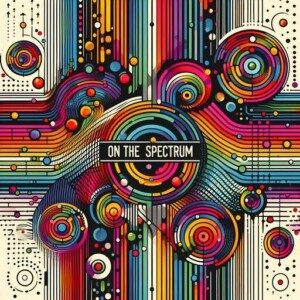One significant hurdle faced by Autistics is the mismatch between facial expressions, tone of voice and their actual feelings.
This incongruence can be considered the bane of autism, as it creates a unique set of difficulties in understanding and navigating social cues.
The autistic individual doesn’t necessarily realize there’s a mismatch, either.
But the neurotypical certainly does. And this is where the problem lies.
This is one reason the NT will think the Autistic was “rude,” when in fact, there’d been a disparity observed by the NT, regarding the Autistic’s body language, tone of voice and perhaps eye expression.
How the autistic person interacts, though (when not mimicking NT behaviors), feels natural to them!
The Mismatch: Facial Expression and Tone of Voice Discrepancy

In neurotypical communication, facial expressions and tone of voice play pivotal roles in conveying emotions and intentions.
However, for individuals with autism, these conventional signals may not align with their true feelings.
This discrepancy can be attributed to difficulties in recognizing and interpreting social cues, a hallmark characteristic of ASD.
Facial Expressions — The Silent Betrayer

Facial expressions serve as windows into our emotions, reflecting joy, sadness, anger and various other sentiments.
For those with autism, accurately decoding these expressions can be a perplexing task.
The challenge lies not in the absence of emotions but in the struggle to decipher the subtleties embedded in facial cues.
Autistic individuals may display incongruent facial expressions, leading to misunderstandings and misinterpretations by their peers.
A smile may not necessarily signify happiness, and a furrowed brow may not always indicate displeasure.
This disconnection between facial expression and internal emotion becomes a silent betrayer, complicating social interactions and contributing to the pervasive sense of isolation often experienced by those on the Spectrum.
Tone of Voice — The Enigma of Emotion

Shutterstock/Sergey Golenko
Similar to facial expressions, the tone of voice carries a wealth of emotional information in typical communication.
However, Autistics may struggle to grasp the nuances of intonation, pitch and rhythm that convey emotional states.
As a result, the intended meaning behind spoken words may be lost, leading to confusion and frustration for both the autistic person and those trying to understand them.
The complex interplay between facial expressions and tone of voice amplifies the challenges faced by individuals with autism in decoding social situations accurately.
The enigma of emotion embedded in these cues further isolates them from the rich tapestry of interpersonal connections.
The Impact on Social Interactions

Freepik.com/gpointstuio
The mismatch between facial expression, tone of voice and true feelings exacerbates the already formidable barriers to social interaction faced by Autistics.
In social settings, the inability to accurately interpret these cues can lead to:
Misunderstandings: Peers and caregivers may misinterpret the emotional state of individuals with autism, potentially leading to inappropriate responses or a lack of necessary support.
Social Isolation: The constant struggle to navigate social cues can result in social withdrawal, as those on the Spectrum may find it easier to avoid potentially perplexing interactions.
Increased Anxiety: The fear of being misunderstood or misjudged intensifies anxiety levels, making social situations daunting and overwhelming for those with ASD.
Strategies for Bridging the Gap

©Lorra Garrick
While the challenges presented by the mismatch of facial expression and tone of voice with feelings are significant, several strategies can be employed to foster better understanding and communication:
Explicit Communication: Encourage open and explicit communication, where individuals with autism are encouraged to express their feelings verbally.
This reduces reliance on non-verbal cues and helps bridge the gap between internal emotions and external expression.
Social Skills Training: Implement targeted social skills training programs that focus on decoding facial expressions and tone of voice.
Providing structured guidance to autistic people can enhance their ability to interpret and respond appropriately to social cues.
Visual Supports: Utilize visual supports, such as social stories or visual schedules, to enhance understanding of social expectations.
Visual aids can serve as a reliable reference point for interpreting facial expressions and tone of voice.
Empathy Education: Foster empathy in neurotypical peers and caregivers by educating them about the challenges faced by autistic individuals.
Increased awareness can lead to more patient and understanding interactions, reducing the likelihood of misinterpretations.
Takeaways
The mismatch of facial expression and tone of voice with feelings poses a significant challenge for people on the Autism Spectrum, complicating their journey through the intricate social landscape.
As we continue to unravel the complexities of ASD, it is crucial to embrace a multifaceted approach that combines education, empathy and targeted interventions to bridge the communication gap.
By fostering a more inclusive and understanding society, we can empower individuals with autism to navigate the intricacies of social interactions and forge meaningful connections in a world that often remains perplexing.
 Lorra Garrick has been covering medical and fitness topics for many years, having written thousands of articles for print magazines and websites, including as a ghostwriter. She’s also a former ACE-certified personal trainer. In 2022 she received a diagnosis of Level 1 Autism Spectrum Disorder.
Lorra Garrick has been covering medical and fitness topics for many years, having written thousands of articles for print magazines and websites, including as a ghostwriter. She’s also a former ACE-certified personal trainer. In 2022 she received a diagnosis of Level 1 Autism Spectrum Disorder.
.



























